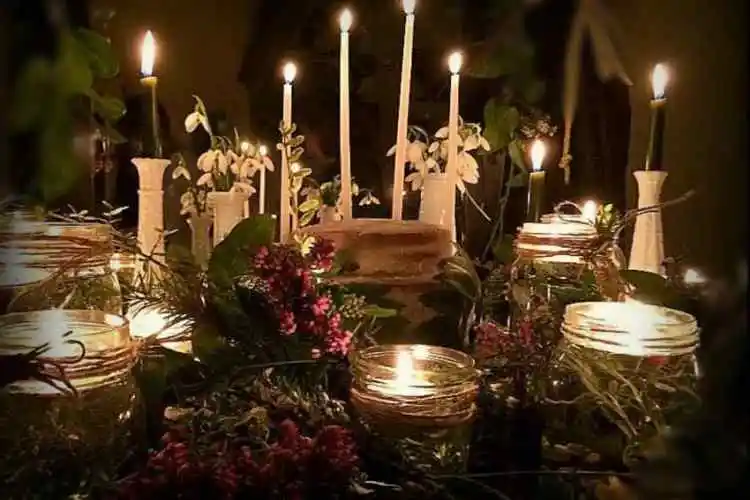Imbolc Pronunciation is “IM-bulk,” Imbolc is a traditional Gaelic celebration that ushers in spring. Midway between the winter solstice and the spring equinox, on February 1st or 2, is when this ancient ceremony, steeped in Celtic tradition, takes place. Brigid’s Day, or Imbolc, honors the goddess Brigid and marks the return of the earth from her winter hibernation.
The Imbolc Festival
The Imbolc Festival is a time to welcome increasing daylight and the promise of new life. It encompasses the renewal of the land and the agricultural activities that occur with the approach of spring. The festival is a time to cleanse and prepare for the upcoming adult season.
What is Imbolc Meaning
Imbolc, derived from Old Irish “oimelk,” meaning “sheep’s milk,” refers to the time when pregnant sheep began to suckle, and signifies the return of life to the land This connection between fertility and the nourishment of another life is central to the story of Imbolc.
Imbolc Celebration
Ways in which Imbolc is celebrated
Imbolc is celebrated in various ways, e.g.
- Lighting or flaming a candle to represent the return of light and heat.
- A sturdy cross carved out of reeds or grass and displayed as a symbol of the house’s protection and blessing.
- By performing Imbolc rituals to bless seeds and agricultural implements, to call the land fertile.
Traditional Imbolc Foods & Dishes
Traditional Imbolc foods available during Imbolc include:
- Dairy products such as milk, cheese, and butter, were again associated with the “sheep’s milk” symbol.
- Bread, especially bannocks or oatcakes, signifies nourishment and the first harvest of the year.
Importance of Colors During Imbolc
The Imbolc Colors is white, which represents purity and purity associated with festivals, and is the dominant color during Imbolc. In addition, light pastels are often used to symbolize the awakening and rebirth of nature.
Usual customs during Imbolc
Brigid’s bedside ritual
In this ritual, a chicken doll or small bed is made for Brigid, symbolizing her role as goddess of fertility. It is then placed near the fireplace or in a special place in the house to invite its blessings and protection.
Also Read : – Cake Delivery in Sydney: How To Find And Order The Best Cakes For Every Occasion
Candlelight ceremony
Candles are lit to represent the sun’s rising power and to honor the light as it returns to the Earth. This event symbolizes hope, inspiration and banishing the darkness of winter.
Seed is a blessing
The seed is blessed as a symbol of new beginnings and potential growth in the coming planting season. This ritual is usually performed by praying for abundant crops.
Imbolc altar building
You can build an Imbolc altar:
- Decorate the altar with pastel-colored white robes or candles to symbolize the return of light and the awakening of spring.
- Include a symbol of Brigid such as her crucifix, a picture of the fireplace, or a small statue or statue of Brigid herself.
- Present offerings of fresh milk, rice, or early spring flowers as a sign of thanks and invite Brigid’s blessing.
Frequently Asked Questions (FAQs).
1. What is the significance of Brigid in the Feast of Imbolc?
Brigid is a revered Celtic goddess associated with healing, fertility and poetry. During the Imbolc era, he is honored as the guardian of the hearth and the house, and his presence requires blessings on the land and upcoming agricultural activities
2. How can individuals who are not part of the Celtic tradition celebrate Imbolc with respect?
Non-Celtic individuals can honor the spirit of Imbolc by doing things that symbolize renewal, such as spring cleaning, planting seeds, or showing appreciation for the return of light and warmth In Imbolc in addition to learning about the history and traditions, one can enhance one’s appreciation of the festival.
3. Are there any modern adaptations of the Imbolc festival?
Yes, contemporary festivals in Imbolc often involve environmentally friendly practices such as tree planting or efforts in environmental cleanup to promote earth and its renewal including community meetings, storytelling and creative arts are recognized as ways to celebrate the spirit of Imbolc in contemporary programs.
Imbolc stands as a long-established festival that continues to welcome people looking to connect with nature, embrace renewal and celebrate the promise of spring
Whether through traditional Imbolc rituals or modern adaptations, the essence of Imbolc endures as a testament to the enduring cycles of nature and the human spirit.


